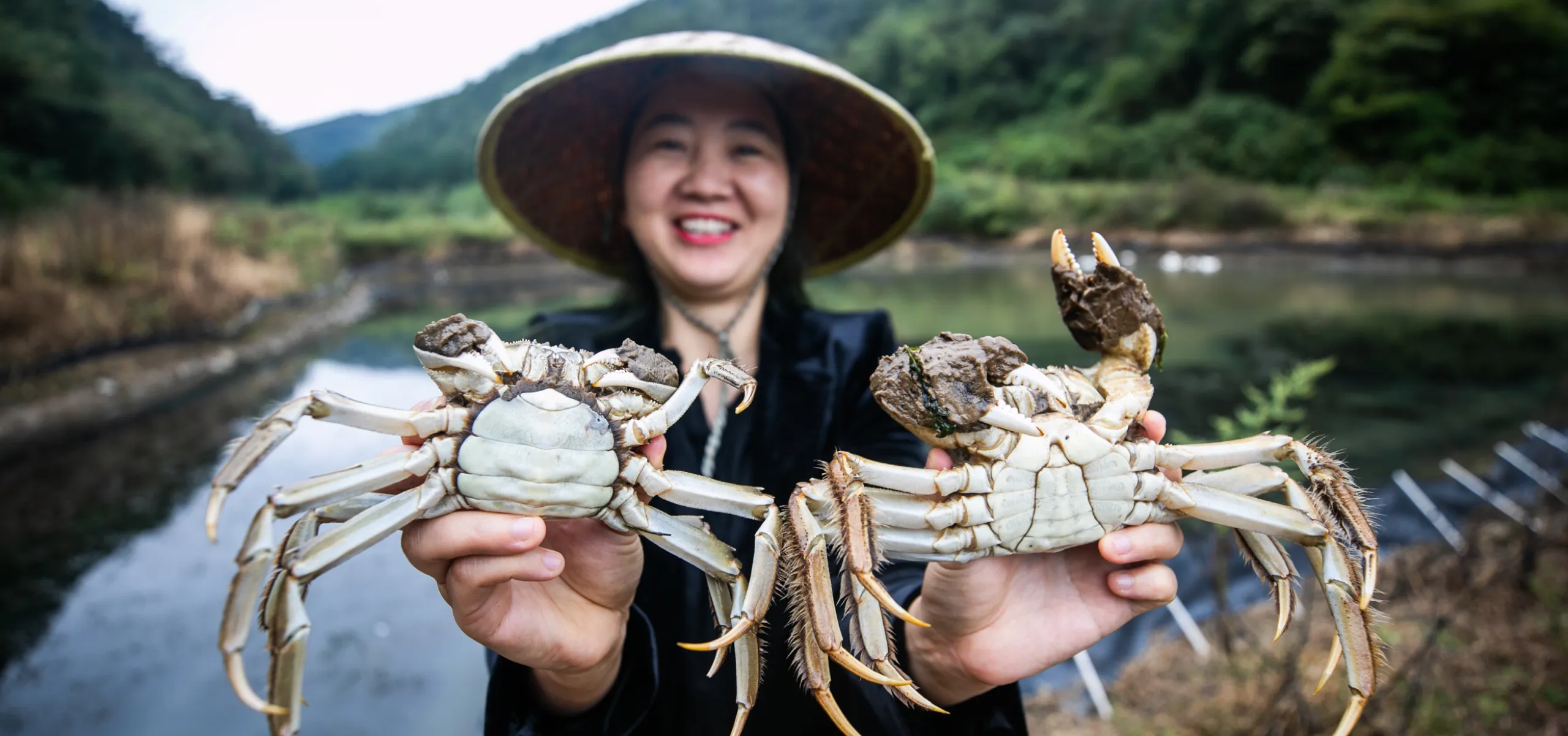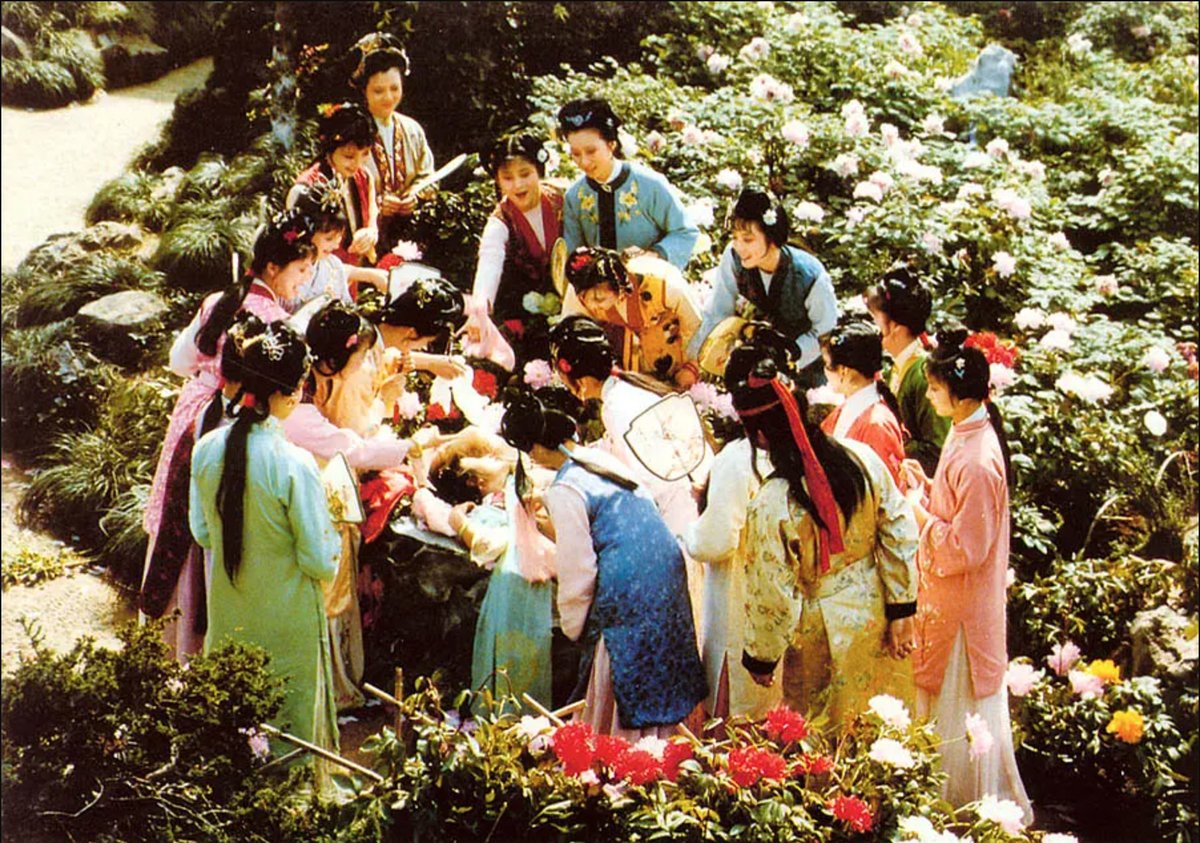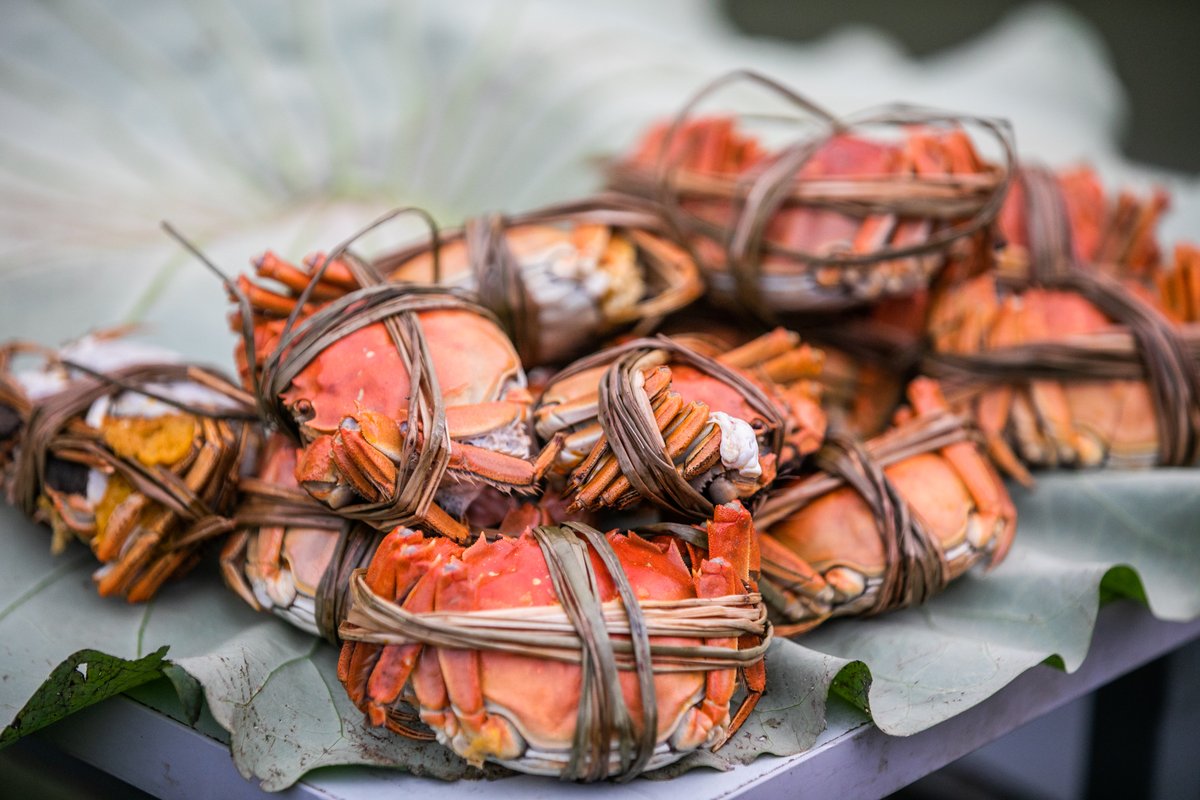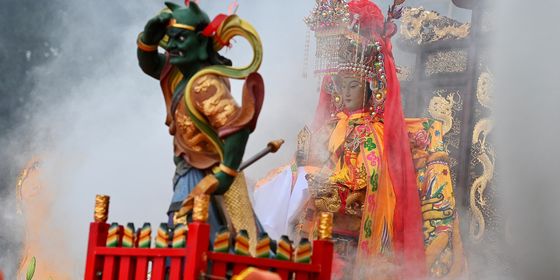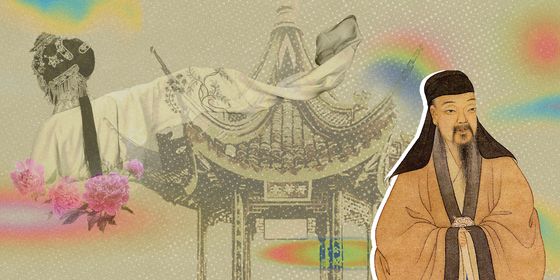China’s love of crab-eating stretches back centuries, with literati writing poems and even appointing “crab servants” to cook the delicacy
When it comes to simple autumn pleasures in ancient Chinese culture, crab and wine are likely at the top of the list. Traditional Chinese health principles stress balance between “warm” and “cold” foods, and as crab is considered “cold” for the stomach, it is best to pair it with warm wine as the colder months approach.
In a poem titled “Crab at Mount Lushan (《游庐山得蟹》),” the Song dynasty (960 – 1279) poet Xu Sidao (徐似道) declares, “There is no better joy in this world” than having crab and wine together on the famous peak in today’s Jiangxi province, which was a favorite haunt of ancient literati. The Book of Jin (《晋书》), a record of the history of the Jin dynasty (265 – 420), contains another verse that reads, “Holding a wine goblet in the right hand, and crab in the left hand/ Floating free on a wine barge/ What more could one ask for in life?”
Ancient Chinese loved crab so much that there are even legends about them. In Yangcheng Lake in present-day Jiangsu province, famous for producing “hairy crab” (Chinese mitten crab), there is even a love tale about a crab and a flower. Once upon a time, a newlywed couple took a boat to Suzhou on a stormy day. A huge wave overturned the boat. The husband pushed the wife to the shore with all his energy, while he sank to the bottom and turned into a crab. Overcome with grief, the wife sobbed until she became a chrysanthemum. After that, every autumn, the crab would crawl ashore and snuggle up to the chrysanthemum flower.
It was fashionable among poets and the upper classes to hold parties in autumn themed around crab, wine, and chrysanthemum flowers (or chrysanthemum tea). In the classic novel Dream of the Red Chamber (《红楼梦》), written in the Qing dynasty (1616 – 1911), the characters hosted a lively crab feast. They drank hot shaojiu wine, ate crabs with ginger and vinegar, and improvised poetry about chrysanthemums. Since there was no soap at that time, they used “bath beans (澡豆),” green bean balls soaked with chrysanthemum leaves, to wash their hands after eating crabs.
During the Song dynasty, the golden age in China’s culinary history, people came up with various new ways to enjoy crab, from crab wontons to crab roe soup buns. They even invented a dish called “crab-stuffed orange (蟹酿橙).” To make this, they cut off the top of an orange, hollowed out the inside, filled it with crab roe and crab meat, and then put the top back on before steaming it in water, wine, and vinegar.
Amusingly, there were many hardcore crab fans in the Song dynasty. The famous poet and foodie Su Dongpo (苏东坡), once wrote a poem for a friend in exchange for two crabs in return. Another poet, Ouyang Xiu (欧阳修), built a retirement house near the lake in Fuyang, Anhui province, because crabs there were much cheaper than in the capital. But most fanatic crab fan award must go to an official named Qian Kun (钱昆). When the Song emperor asked him if he had a preferred location for an official post, he responded, “Any place with crab.”
In the Ming dynasty (1368 – 1644), a revolutionary crab-eating tool kit “蟹八件” was born. Instead of eating crab messily with their hands, people could eat gracefully by employing eight delicate tools. These consisted of a hammer to knock on the crab shell to make it easy to open, an small axe to lift the shell, a hook to extract the crabmeat, a spoon to scoop out the crab roe, pincers to get rid of unwanted parts, scissors to snip off the legs and claws, a cutting board, and even a basin for holding discarded shells.
The tools left the shells so intact that one could allegedly reconstruct the crab using empty shells after eating. In Suzhou, where Yangcheng Lake is located, the tool set became a symbol of the crab culture and even an essential part of women’s dowry when they married.
In the Qing dynasty, the writer Li Yu (李渔) was nicknamed the “crab fairy” (蟹仙) for his love of crabs. For Li, who could rival today’s lifestyle bloggers with his DIY projects—such as using a bamboo tube to draw spring waters to his kitchen, and painting windows facing the picturesque lake—eating crabs was a way of enjoying life. When crab season came, he could have at least 20 fresh crustaceans every day. He even appointed a “crab servant” among his household maids, whose only job was to cook crabs for him. In the off season, he relied on crabs pickled in yellow wine, and even drank the wine, wanting to get every last drop of crab essence.
But still, Li believed steaming was the most authentic way to enjoy a crab, as it brings out its natural flavor. He also pointed out one thing in common among crabs, melon seeds, and water chestnuts: peel it by yourself to enjoy it to the fullest.





